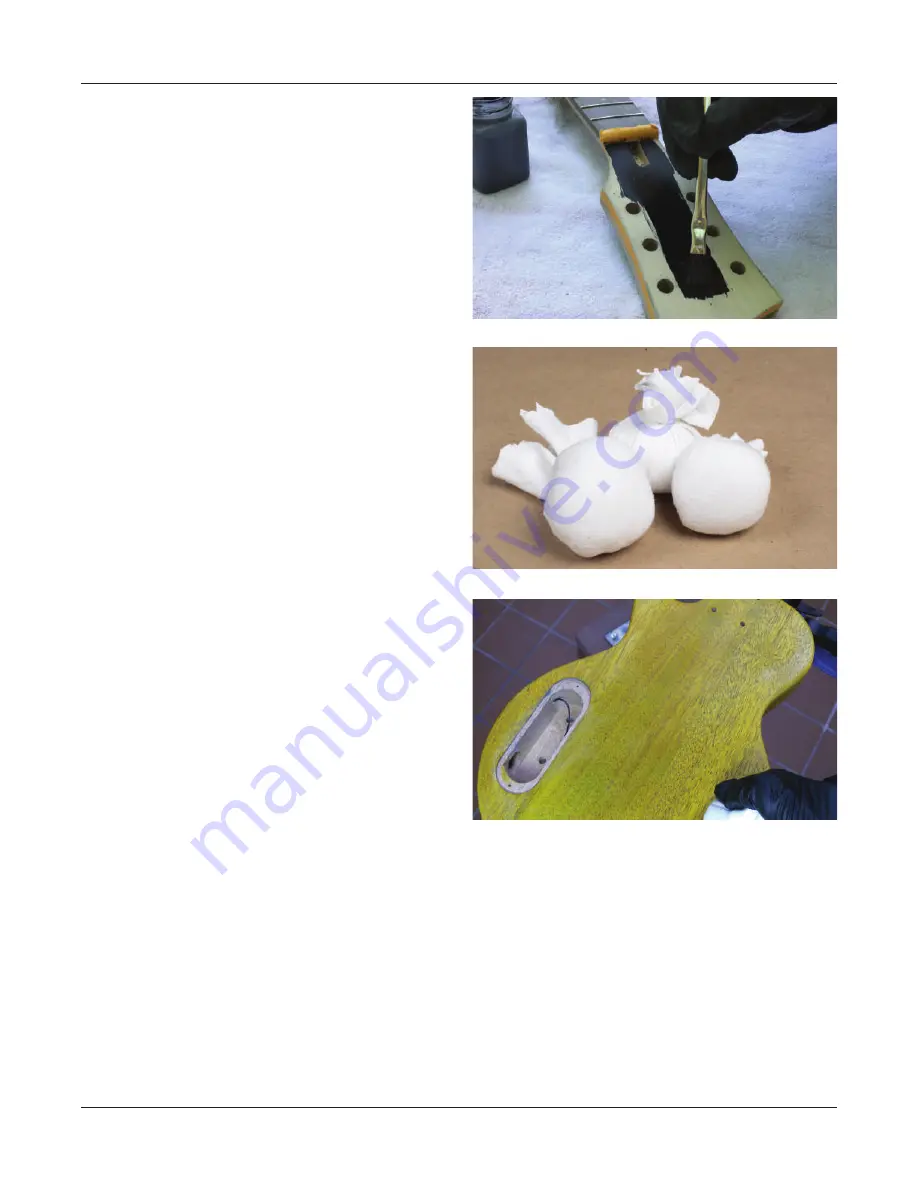
stewmac.com
6
Tape off the edges around the peghead face—the nut
should still be taped off from filling. Use fingerboard stain to
color the peghead face black. A little goes a long way! Start in
the center and work your way out to the edges, as this helps
reduce bleed around the edges. Let dry for 1 hour. Peel the
tape and check for any signs of bleeding on the sides and
top of the peghead. Any stain that has bled onto the sides
can be removed with a scraper or sandpaper.
Color coats
(optional)
ColorTone Liquid Stains mixed into Wipe On Poly make an
easy to apply and nice looking translucent finish for the body
and neck. It’s nonflammable, simple to use, very forgiving,
and can be applied indoors.
Mix 1/4oz of Vintage Amber (or the color of your choice)
ColorTone Liquid Stain into 4oz of the Wipe On Poly finish
and mix well. Conduct a test on some scrap wood to ensure
the color looks the way you’d like it to. If it’s too dark, add a
little more finish to weaken the color. If it’s too light, add an
additional drop or two of stain. Remember, a small amount
of stain goes a long way!
As you apply the color watch for streaks and uneven areas.
Keep working the pad in a circular motion over these areas,
followed by long strokes running the length of the instru-
ment until you have uniform tinting over the entire surface
of the body.
Apply the color to the neck in the same fashion as the body.
Any residual finish that ends up on the fretboard face will be
scraped back once it dries.
Allow the color coats to dry 2-3 hours.
Final top coats
Do not sand on your color coats. Apply 4-8 additional coats
of clear over the top of the color or until you’ve reached your
desired thickness. Allow to dry for 24 hours.
In most cases final sanding and buffing of the ColorTone
Wipe-On Poly finish is not necessary but there are times
where it may be needed to level out uneven surfaces and
imperfections in the finish. If finish sanding is needed, we
suggest going over the instrument with 800-grit, followed
by 1200-grit sandpaper. Use care not to sand through the
topcoats into the color. Then follow up with ColorTone Me-
duim Polishing Compound on a soft cloth or buffing pad.
Applying finish

















